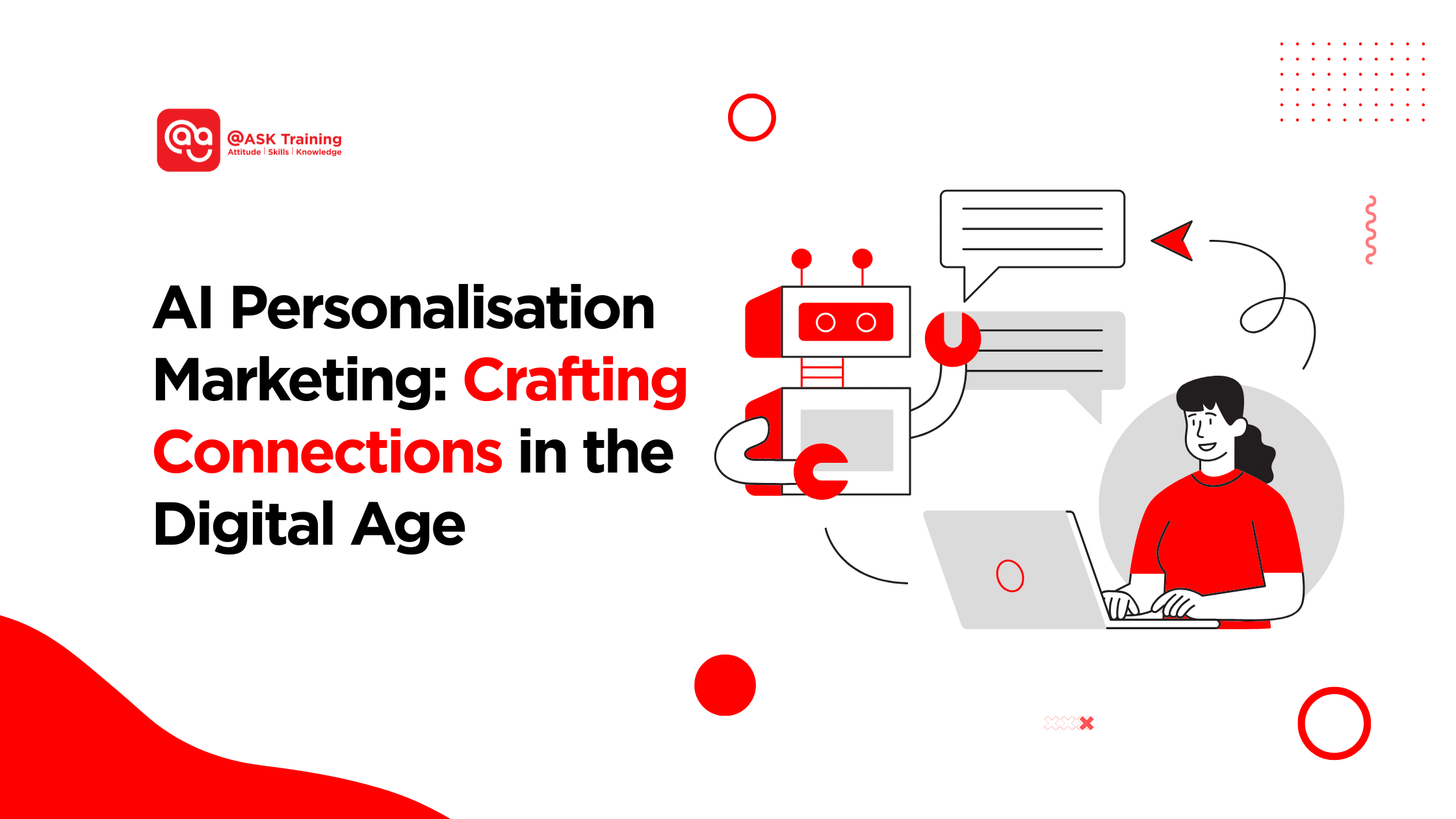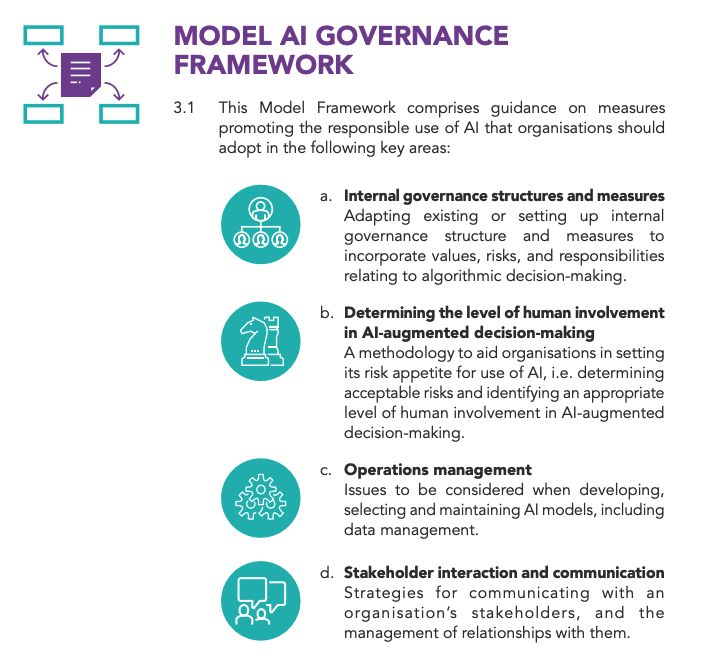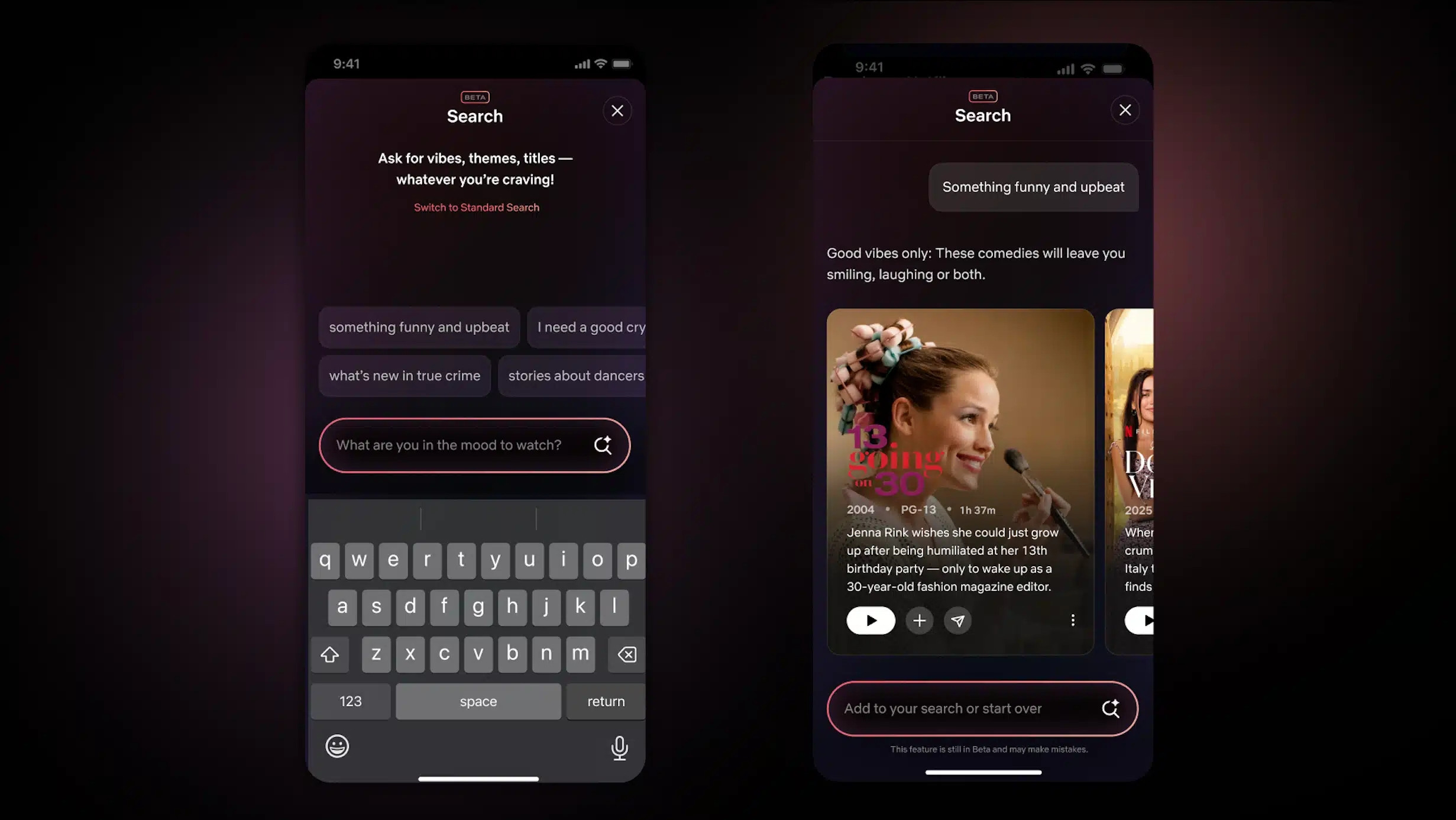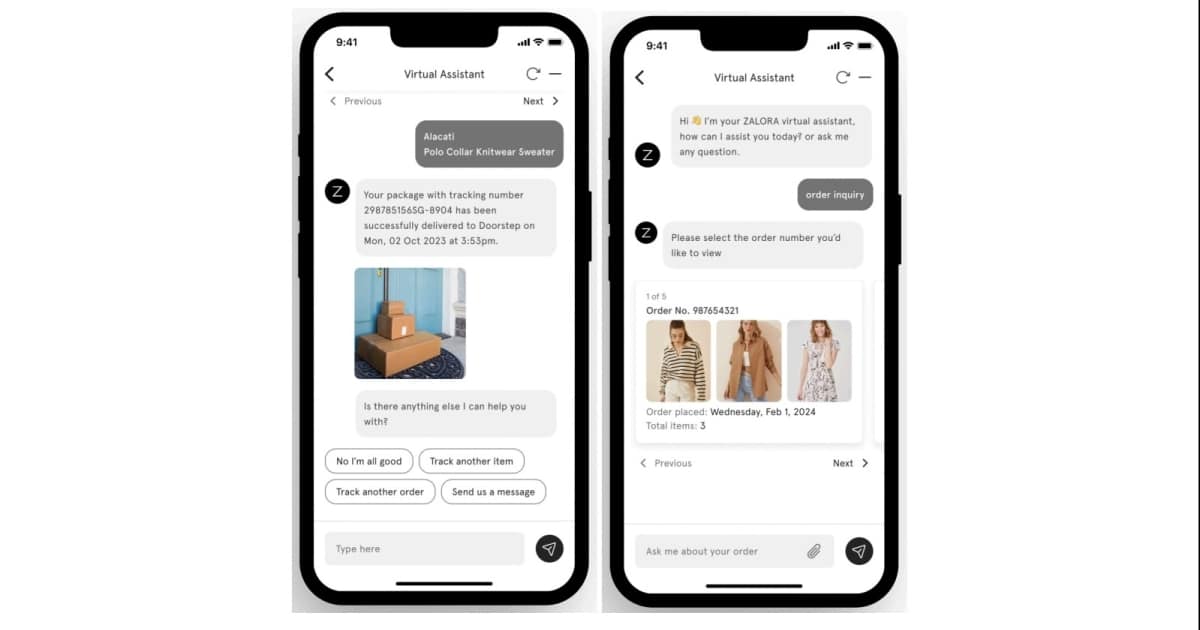
Imagine receiving a product recommendation that feels like it was handpicked just for you. In today’s fast-paced digital landscape, delivering such personalised experiences isn’t just a marketing gimmick; it’s an expectation.
Over 70% of consumers are expecting brands to deliver personalised marketing solutions (McKinsey & Company), making AI-driven personalisation a cornerstone of modern marketing strategies.
AI-driven personalisation goes beyond generic segmentation. It utilises advanced algorithms and real-time data to craft marketing messages that resonate on a personal level. As brands strive to build deeper connections with their audiences, AI emerges as the secret sauce in transforming customer engagement.
In this article, we’ll explore how AI reshapes marketing strategies, enhances engagement, the tools powering these efforts, and the ethical considerations involved.
Let’s dive in.
Foundations of AI-Driven Personalisation
In an era where generic marketing messages are tuned out as easily as background noise, AI personalisation marketing has emerged as the key to cutting through the clutter, transforming how brands build relevance at scale.
What Is AI Personalisation?
At its core, AI-driven personalisation marketing uses algorithms and data analysis to deliver targeted marketing messages based on individual preferences, behaviours, and demographics.
Unlike traditional segmentation, which groups users broadly, true digital marketing personalisation analyses thousands of data points to craft individualised experiences. AI personalisation delivers on unique patterns, predicting what each customer is likely to appreciate next.
Why It Matters
In today’s fast-paced digital landscape, where attention spans are short and choices are abundant, customers don’t just prefer a tailored experience; they demand it.
AI-driven personalisation allows companies to:
- Anticipate needs before customers articulate them.
- Adapt in real time to shifting behaviours.
- Turn data into intimacy at an unprecedented scale.
Case Example
Grab is an excellent example of this. Its super app uses AI to personalise ride, food, and payment suggestions based on each user’s location, behaviour, and preferences.
This hyper-local approach to personalisation has helped Grab retain millions of users across Southeast Asia. In addition:
- Grab’s AI-powered Merchant Assistant has demonstrated measurable impact, with platform data showing a 30% increase in average advertiser spend and 49% YoY growth in monthly active advertisers on their self-serve platform (Grab 2025 Merchant Ecosystem Report)
- AI-powered tools, such as AI Ride Guidance, direct drivers to potential high-demand areas, benefiting both drivers and users.
- The company has also launched an AI Centre of Excellence in Singapore to accelerate innovation across its ecosystem.
By integrating AI deeply into its platform, Grab enhances user satisfaction, drives retention, and stays ahead in the competitive super app space.
This is just one example of AI’s transformative power, but how exactly does it rewrite the rules of marketing strategy as a whole?
How AI Reshapes Marketing Strategies?
The marketing playbook is being rewritten in real time. Where traditional strategies relied on educated guesses and broad demographics, AI delivers something different: a living, learning system that continuously optimises every customer interaction.
This transformation manifests in two fundamental states:
The Shift to Granular Targeting
Gone are the days of one-size-fits-all marketing. Brands are shifting from broad mass marketing to hyper-targeted, data-driven strategies. AI enables this shift by analysing vast amounts of data to identify individual preferences and trends.
Real-Time Feedback Loops
One of the biggest advantages of AI-driven strategies is the ability to learn and adapt instantly. For instance, if a fashion retailer notices a customer frequently browsing sportswear, the homepage may adjust dynamically to showcase related items.
Tools like Dynamic Yield power such real-time adjustments, turning passive browsers into active buyers.
Case Example
AI is changing the game for marketers by turning individual user actions – clicks, searches, and purchases into real-time insights. This creates a mechanism where their platforms can instantly personalise what they merchandise to users, keeping content relevant and timely.
As one of Singapore’s top e-commerce platforms, Shopee uses AI to recommend products based on what you’ve browsed, liked, or added to your cart. These tailored recommendations help users discover relevant products more efficiently, contributing to higher engagement and increased average order values.
Shopee continuously refines its AI algorithms to improve the relevance and effectiveness of these suggestions, demonstrating the power of real-time, AI-driven marketing in enhancing both customer experience and business performance.
But the true measure of success lies beyond algorithms—it’s in how these personalised experiences forge deeper connections with customers
Enhancing Customer Engagement
In today’s crowded digital marketplace, cutting through the noise requires more than just visibility; it demands creating genuine connections that resonate on a personal level.
This is where AI-driven personalisation marketing transforms passive audiences into engaged brand advocates.
Why Personalisation Boosts Engagement
Tailored experiences tap into a fundamental human desire: to feel understood. From personalised emails to dynamic product recommendations, AI personalisation directly influences engagement metrics such as click-through rates and repeat visits. For example, personalised emails generate 6x higher revenue than generic campaigns.
Case Example: DBS Bank
DBS Bank has harnessed AI to deliver hyper-personalised experiences to its customers. By analysing over 15,000 customer data points, DBS provides more than 30 million personalised insights and nudges monthly to over 3.5 million retail and wealth customers in Singapore alone (Source: Business Times).
These nudges include tailored financial advice, product recommendations, and timely alerts, enhancing customer engagement and satisfaction.
Furthermore, DBS’s AI-driven initiatives have led to significant operational efficiencies. For instance, DBS’s Gen AI-powered customer service assistant, or CSO Assistant, has reduced average call handling time by up to 20%, allowing for more efficient and effective customer interactions.
This strategic use of AI for personalisation not only improves customer experience but also drives higher engagement and loyalty, demonstrating the tangible benefits of personalised banking services.
Behind these results sits a growing ecosystem of AI technologies. From predictive analytics to real-time decision engines, the platforms listed below are turning personalisation theory into practice.
Tools and Technologies in AI Personalisation
AI personalisation is changing how marketing works. It’s not just about automation, but about delivering timely, relevant content that drives real results.
To execute this effectively, marketers like you need the right technology stack. Here’s how leading tools are powering this shift:
| Category | Tool | Core Features | Key Benefit |
| Agentic AI (Next-Gen) | AutoGPT | Autonomous goal-driven agents, self-improving workflows | Reduces manual tasks by 60% through proactive campaign optimisation |
| Microsoft AutoGen | Multi-agent collaboration, human-in-the-loop oversight | Increases personalisation accuracy by 45% via continuous learning | |
| Predictive Analytics | Salesforce Einstein | Predictive lead scoring, AI recommendations, automated workflows | Boosts conversions by 35% with next-best-action prompts |
| Adobe Sensei | Cross-channel tagging, real-time analytics, dynamic media optimisation | Increases engagement by 40% via personalised experiences | |
| Real-Time Interaction | Drift | Conversational AI chatbots, meeting scheduling, lead qualification | Generates 50% more qualified leads instantly |
| Intercom | Personalised messaging, automated helpdesk, segmentation | Reduces response time to seconds | |
| Behavioural Personalisation | Dynamic Yield | Behavioural targeting, recommendation engines, A/B testing | Drives 15-30% higher AOV via tailored displays |
| Optimizely | Multivariate testing, AI experimentation, analytics | Delivers 25% more conversions via real-time optimisations | |
| Data Unification | Segment | Unified customer profiles, 300+ integrations | Improves targeting accuracy by 3x |
| Tealium | Enterprise data collection, real-time CDP | Reduces wasted ad spend through clean segmentation | |
| Next-Gen Interfaces | Affectiva | Facial expression analysis, ad response tracking | 25% higher ad recall via emotion-aware content |
| Alexa/Voice AI | Voice-driven recommendations, hands-free UX | 40% repeat usage for voice commerce |
These tools should matter to marketers; they don’t just save time but drive measurable outcomes. Better conversion rates, stronger engagement, higher retention, smarter ad spend, and higher ROIs all come from getting personalisation right.
However, even the best tools require careful implementation, especially when balancing personalisation with privacy and ethical considerations.
Privacy and Ethical Considerations
As AI-powered personalisation becomes the backbone of modern marketing, businesses must navigate a critical challenge: delivering tailored experiences without compromising user trust or regulatory compliance.
The Privacy Paradox
Personalisation enhances user engagement; it also demands equal attention to data responsibility.
In Singapore, the Personal Data Protection Act (PDPA) requires organisations to obtain explicit consent before collecting, using, or disclosing personal data.
Companies must inform users of the purpose behind data collection and provide them with the option to opt out where appropriate. This ensures that personalisation efforts remain transparent and respectful of user autonomy.
For example, many local apps and services now offer explicit opt-in settings and clear explanations of data use, aligning with PDPA standards.
For businesses outside of Singapore, the EU General Data Protection Regulation (GDPR) and the California Consumer Privacy Act (CCPA) are two of the most stringent data privacy regulations globally.
GDPR sets the gold standard for comprehensive data protection with its extraterritorial reach, while CCPA pioneered US state-level privacy rights that have inspired similar laws nationwide.
Together, they represent evolving global expectations for transparency, user control, and corporate accountability in the handling of personal data.
Ethical AI Usage
Under the IMDA and PDPC’s AI Governance Framework, three pillars for ethical deployment are outlined:
- Human-Centricity: Design AI that augments (not replaces) human judgment.
- Explainability: Disclose how algorithms make decisions (e.g., “Why was this product recommended?”).
- Accountability: Regularly audit models for bias, such as quarterly fairness reviews.
Model AI Governance Framework
(Source: PDPC)
Businesses are encouraged to anonymise user data where possible, minimise bias in AI models, and communicate how automated decisions are made. By doing so, companies not only meet regulatory expectations but also foster trust and credibility.
Proactive Measures for Marketers:
- Anonymise first: Use aggregated data for trend analysis where possible.
- Layer consent: Allow users to opt out of hyper-personalisation (e.g., emotion tracking).
- Document everything: Maintain clear records for regulators, as required by PDPA Section 11.
Brands in Singapore that embrace these principles by being transparent about how AI is used and securing informed consent are better positioned for long-term customer loyalty and reduced compliance risk.
With privacy frameworks in place, let’s examine real-world cases where AI personalisation drives measurable business growth.
Success Stories: Real-World Applications
1. Netflix: Content Discovery with AI Personalisation
Netflix Content Discovery with Generative AI-powered search tool
(Source: TechCrunch)
The Challenge
With millions of global subscribers and relentless competition, Netflix needed to transform passive viewers into loyal fans by continuously engaging them with relevant content.
AI Personalisation Approach
Netflix employs advanced AI algorithms that analyse:
- Viewing history (including rewatches and pauses)
- Search patterns and ratings
- Even the time spent hovering over thumbnails
Its recommendation engine predicts content users are most likely to enjoy, tailoring the homepage and suggestions uniquely for each subscriber.
Results
- Over 80% of viewed content comes from personalised recommendations.
- Increased user engagement and reduced churn rates.
- Enhanced customer satisfaction by making content discovery seamless and intuitive.
Key Takeaway
Netflix’s AI-driven personalisation sets the industry standard for delivering hyper-relevant content, driving growth through improved user experience.
2. Zalora SG: E-Commerce Engagement with AI-Driven Recommendations
Zalora’s AI-powered customer service chatbot
(Source: Retail Asia)
The Challenge
Zalora is a leading fashion e-commerce platform in Southeast Asia, competing in a crowded market where customer retention is critical.
AI Personalisation Approach
Zalora uses AI to analyse and personalise across touchpoints:
- Email campaigns with “Complete Your Look” product pairs
- App notifications triggered by abandoned carts
- Homepage layouts adapting to individual style preferences
Results
- Significant increase in click-through rates on personalised emails.
- Higher conversion rates from AI-recommended products.
- Improved customer loyalty and repeat purchases.
Key Takeaway
Zalora demonstrates how AI turns transactional shopping into curated experiences, which is especially critical in APAC’s mobile-first markets.
These examples illustrate how personalised strategies drive measurable business outcomes.
While these results impress, the future of AI personalisation goes even further. Let’s explore in the next section.
The Future of AI Personalisation
Looking ahead, AI personalisation is set to become even more anticipatory and immersive. We stand at the precipice of a new era. One where technology doesn’t just understand customers but anticipates their needs while respecting their values.
Three transformative shifts will redefine marketing excellence:
1. Predictive Personalisation: From Reactive to Anticipatory
AI won’t just respond to behaviour—it will forecast needs before they arise. Picture:
- Smart replenishment: Platforms auto-ordering essentials when sensors detect low inventory.
- Proactive healthcare: Pharmacy apps suggesting remedies based on weather-triggered allergy risks.
- Invisible engagement: Marketing that feels less like campaigns and more like “helpful nudges.”
For marketers, this means shifting from scheduled campaigns to always-on value streams that enhance loyalty without relying on disruptive promotions.
2. Sustainable AI: Precision with Purpose
As consumers demand eco-conscious practices, AI will:
- Reduce digital waste: Targeting only high-intent users, cutting unnecessary ad emissions.
- Optimise resources: Dynamic creative that swaps heavy videos for lightweight assets on slow networks.
- Align with values: 73% of APAC consumers prefer brands with sustainable targeting. (Accenture 2023)
Example: A beauty brand using AI to serve minimal-product-packaging ads to eco-aware shoppers.
3. Immersive Experiences: Blurring Physical & Digital
Spatial computing and the metaverse will enable:
- Virtual store assistants recommend products based on your avatar’s style.
- AR try-ons that adjust to your skin tone/body type in real time.
- Contextual promos: Walking past a café? Your loyalty app pops up a personalised latte coupon.
The shift: Marketing transitions from interruption to embedded value in daily life.
Preparing for What’s Next
To thrive, marketers must:
- Upskill in AI orchestration: Tools will evolve, but strategic thinking remains irreplaceable.
- Champion ethical design: Balance hyper-relevance with privacy (recall PDPA/GDPR frameworks).
- Think ecosystem-first: Personalisation won’t live in silos but across interconnected platforms.
As all these trends converge, the role of marketers will evolve too. Success will depend on mastering AI tools, understanding data ethics, and designing experiences that are not only hyper-relevant but also human, transparent, and values-driven.
Marketers won’t just be selling products; they’ll be orchestrating ecosystems of personalised value.
Wrapping Up
AI-driven personalisation is revolutionising customer engagement by making marketing more human, responsive, and relevant.
As brands continue to evolve their strategies, leveraging AI not only meets customer expectations but also creates lasting relationships. By combining real-time responsiveness with emotional intelligence, brands can now:
- Anticipate needs before customers voice them
- Respect boundaries through ethical data practices
- Deliver value at every touchpoint
How will your brand use AI to foster deeper connections?
Ready to Transform Your Strategy?
Take your AI marketing skills further with @ASK Training’s range of AI and Digital Marketing programmes to equip yourself with AI tools and strategies.
Here are some of our popular courses:
- WSQ Generative AI for Digital Marketing Course: Learn to create AI-powered visual content and campaigns.
- Mastering ChatGPT for Strategic Communication: Use ChatGPT for high-impact copywriting and customer engagement.
Enrol today and start your AI marketing journey!
Related Courses
- WSQ Generative AI for Digital Marketing Course
- Mastering ChatGPT for Strategic Communication
- WSQ Microsoft 365 & Copilot for Data Management
◆◆◆



